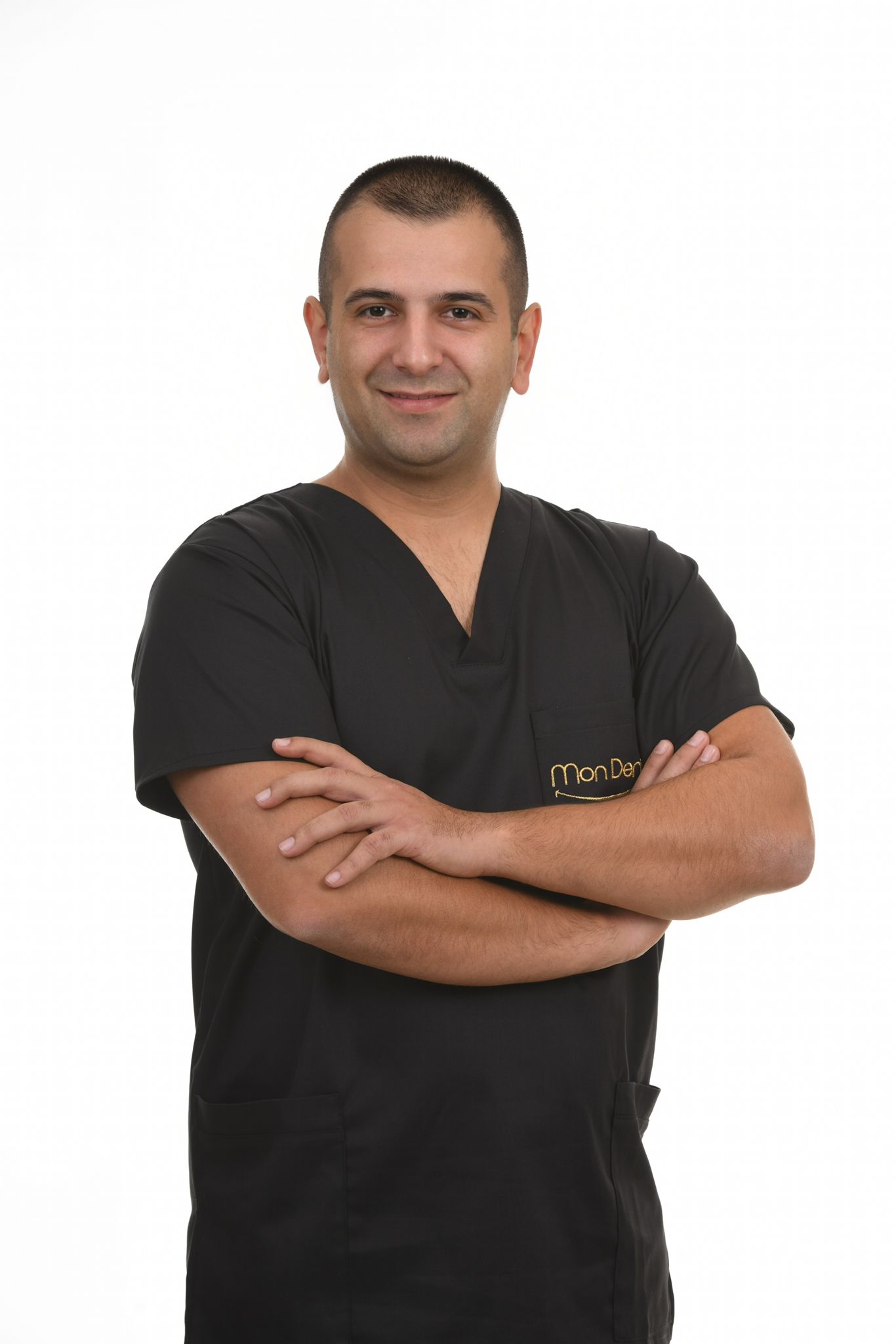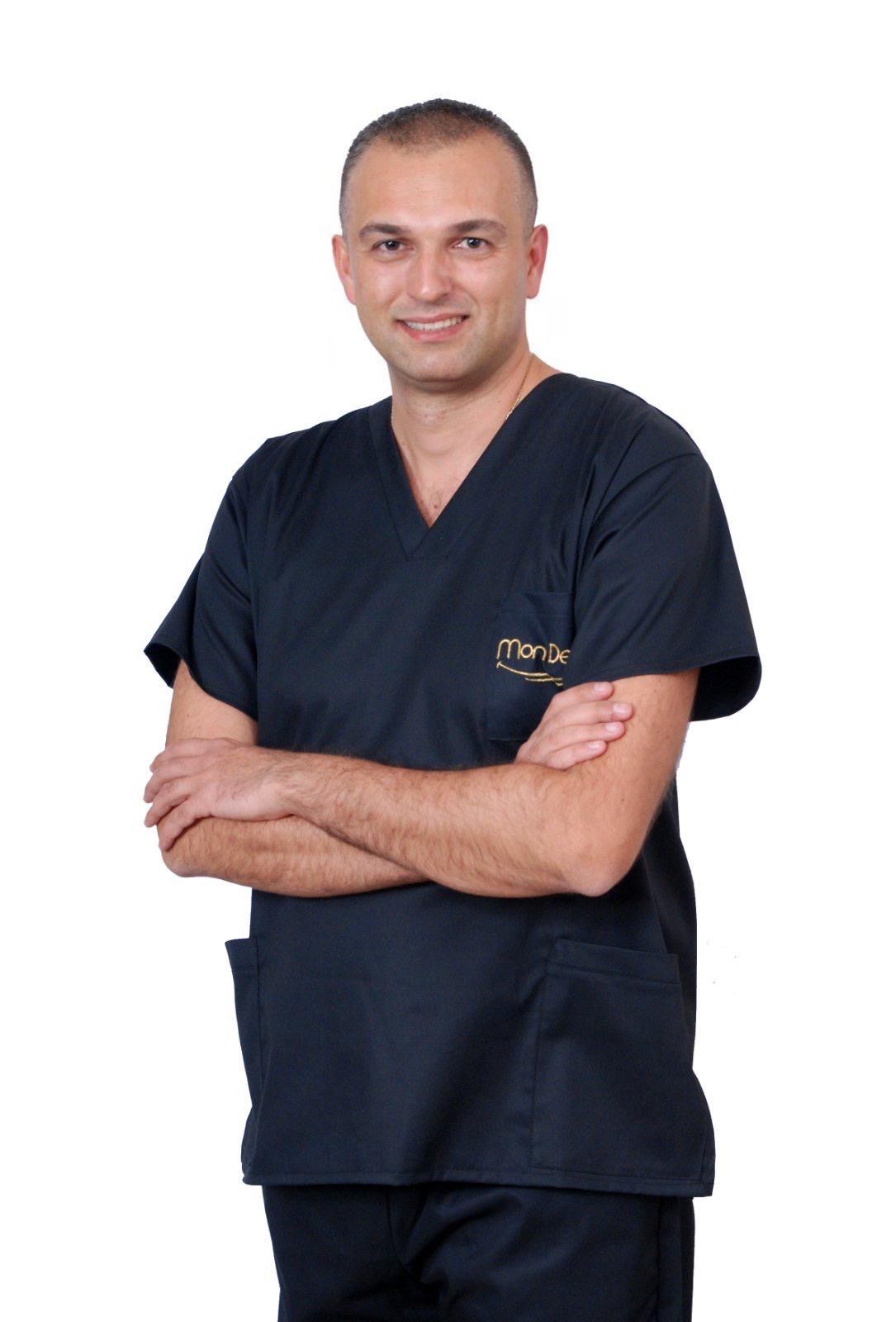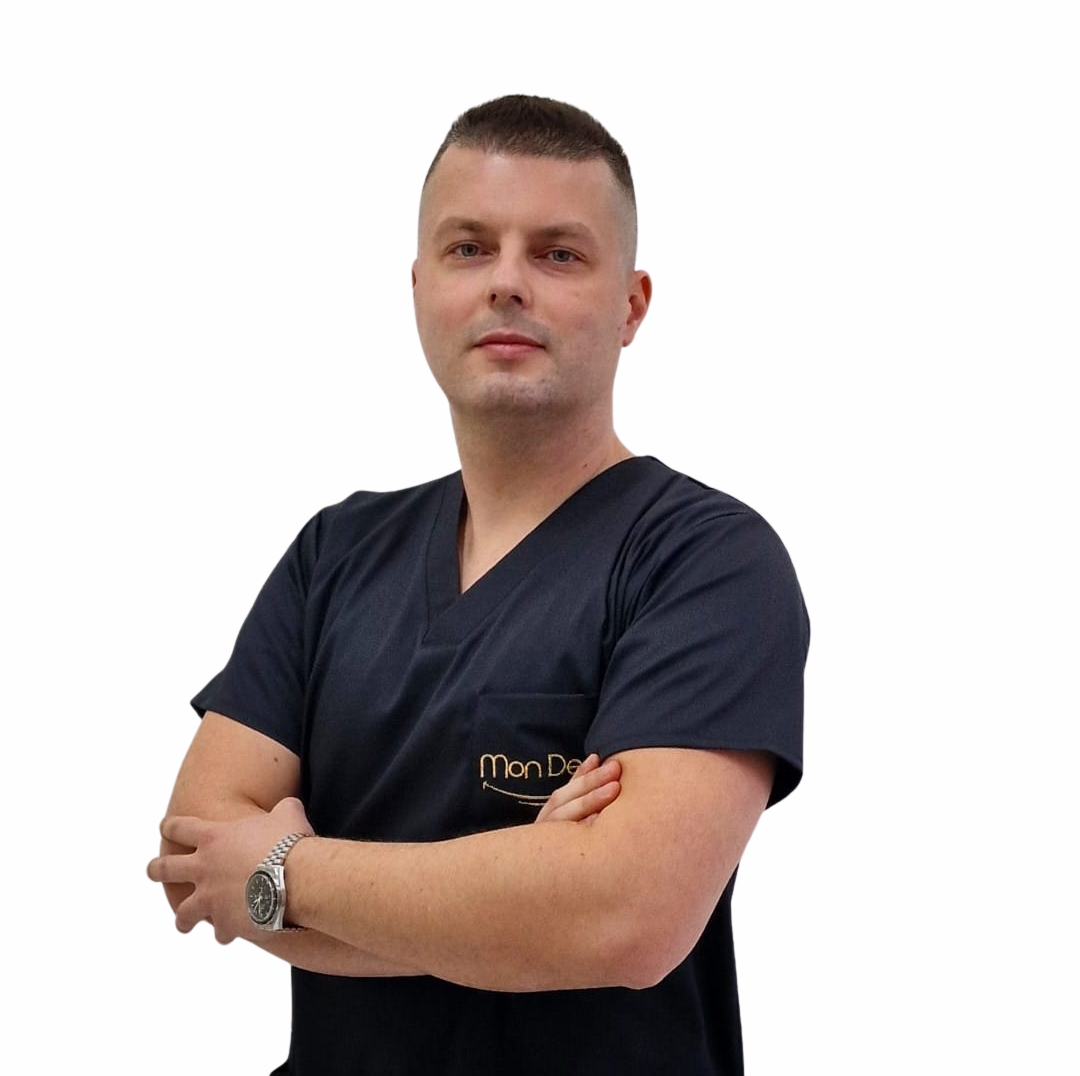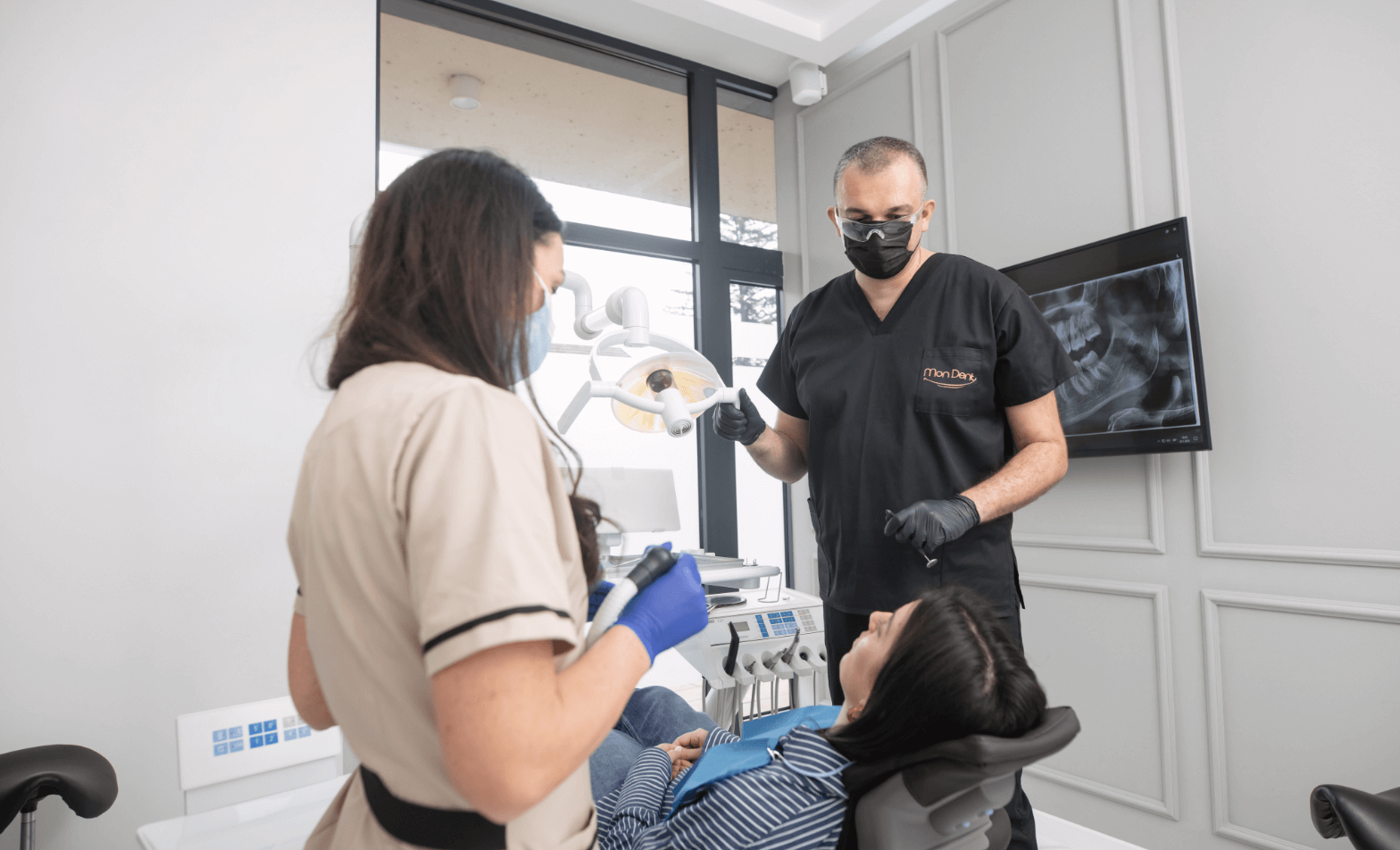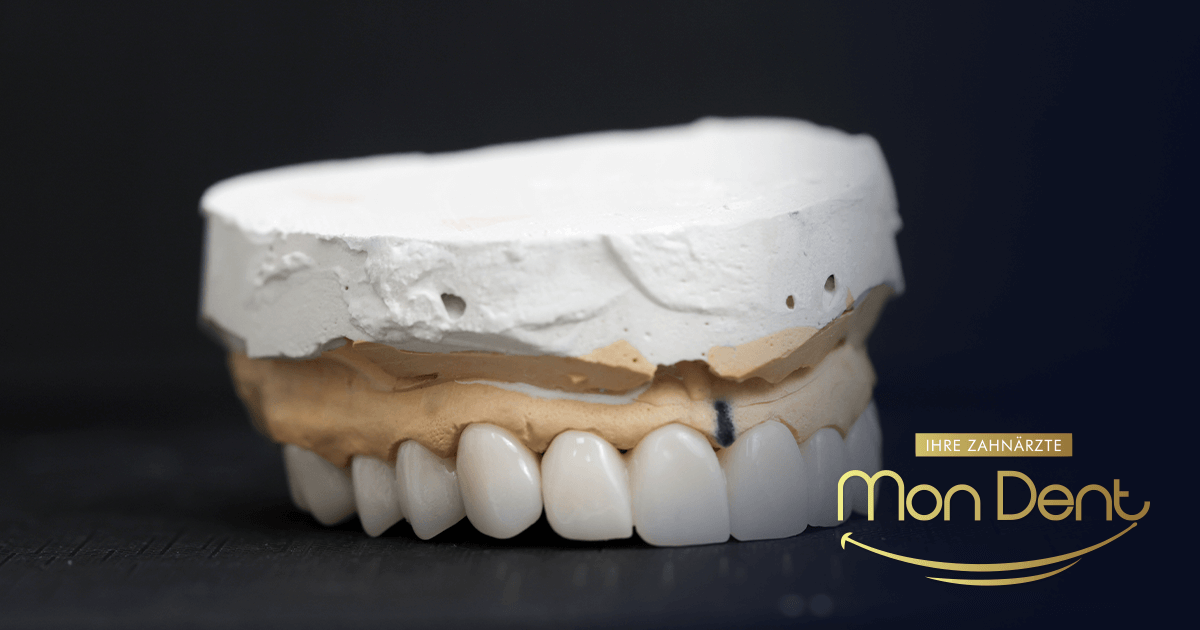Content:
- What causes bone loss in the jaw?
- Diagnostics and planning
- Bone replacement methods
- Innovative solutions without standard augmentation
- Implant installation process
- Why choose MonDent?
- Conclusion
Implantology is an advanced branch of dentistry focused on the installation of dental implants. Implants are biocompatible titanium screws that fuse with the jaw bone over time (osseointegration) and serve as a stable, natural replacement for lost teeth.
Successful implant placement depends on the expertise of the dentist but also on the current condition of your jaw. If you have sufficient quantity and quality of bone in your jaw, implant placement will be much easier. Otherwise, your implant placement process will take longer, but all for the sake of the procedure being done correctly and successfully.
Long-term tooth loss, periodontal disease, and other causes can lead to bone resorption (retraction) in the toothless area. When the bone becomes too small, the procedure itself is difficult and requires additional procedures.
In these cases, the MonDent dental team carries out certain processes to ensure successful implant placement. Special diagnostics are performed, various bone replacement methods and alternative implant techniques are selected, such as bone grafting, which is the most popular method, and sinus lift, which is a common surgical procedure.
Contact MonDent dental office and schedule an appointment with our dentists with extensive experience in placing dental implants.
What causes bone loss in the jaw?
Bone loss in the jaw is one of the main challenges when planning dental implant placement. Understanding the causes of bone loss is key to finding appropriate solutions and safe implantation. Therefore, it is important to first determine the causes of bone loss in order to find the appropriate method. implant placement for your fork.
- Long-term tooth loss
When a tooth is missing for a long time, the bone in that place gradually loses volume. Bone is naturally maintained by the stimulation provided by chewing, and the absence of teeth leads to its loss. Therefore, patients who have been without teeth for a long time often have reduced bone volume, which makes it difficult to directly place implants. This is also one of the most common causes of bone loss in the jaw, most often in the elderly.
- In periodontitis
Chronic gum disease, also known as periodontitis, destroys the supporting structures of the teeth, including the jawbone. Inflammatory changes lead to bone loss and can make it much more difficult to place implants. Early recognition and treatment of gum disease helps preserve bone and makes future dental procedures easier.
- Trauma and osteoporosis
Jaw injuries or systemic diseases such as osteoporosis can weaken the bone and increase the risk of bone defect or resorption. These patients often require additional planning or bone augmentation prior to implant placement to ensure implant stability and longevity. Therefore, it is important to know up front that implant placement requires patience in order to find the best method for your current condition.
- Long-term use of dentures
Traditional dentures that rely only on the gums and palate can further accelerate bone resorption. Since they do not stimulate the bone in a natural way, there is a gradual decrease in bone volume, which can make implant placement difficult. In such cases, implants or combined procedures that preserve bone and jaw function are recommended.
Diagnostics and planning
Accurate diagnostics are important when it comes to implant placement, especially in patients with bone deficiency. At MonDent, we use state-of-the-art 3D rendgen, which enables three-dimensional analysis of the jaw and teeth. This type of imaging provides a detailed insight into the condition of the bone, identifies possible defects and risks, and also uses minimum radiation dose, which makes the procedure safe for every patient.
Based on the results of the 3D imaging, our dentists carefully plan each step of the implantation – from optimal number and position of implants, to their precise angulation. A 3D X-ray is taken before the procedure so that we can prepare a detailed and safe treatment plan tailored to the specific needs of each patient.
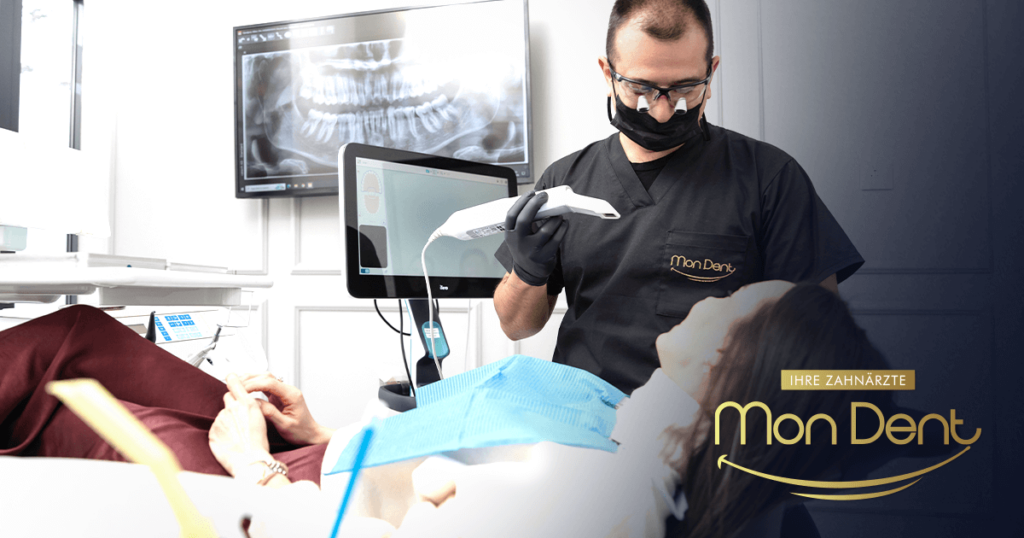
In addition to modern technology, MonDent practices interdisciplinary approach. In more complex cases, we consult with multiple specialists – an implantologist, an oral surgeon, and a periodontist – to ensure the best possible outcome. Such teamwork reduces the risk of complications, increases the precision of the installation, and gives patients additional security and peace of mind throughout the process.
With a combination of cutting-edge technology and an expert team, MonDent patients can be assured that every detail of their implant plan has been carefully considered and that the entire process will be as safe and comfortable as possible.
Bone replacement methods
In patients with bone deficiency, it is often necessary to increase bone volume further before implant placement. At MonDent, we use various methods. bone augmentation, tailored to the specific needs of the patient, to ensure long-term implant stability and optimal aesthetic results.
Sinus lift (Sinus lift)
A sinus lift is a safe and common surgical procedure that lifts the floor of the sinus and replaces lost bone mass in the upper jaw. During the procedure, the sinus lining is carefully lifted, and the space underneath is filled with artificial bone granules. This creates sufficient bone height for stable implant placement. Sinus lift is one of the common procedures.
When is it applied? This method is most often used when the back of the upper jaw does not have enough bone to accommodate the implant. The procedure is followed by several months of healing to fully integrate the graft with the natural bone, ensuring long-term stability of the implant.
Bone grafting (Augmentation)
Bone augmentation involves adding new bone substance to an area with bone deficiency. It can be used autologous diet (from the patient's own body), alograft (donor bone) or synthetic bone substanceThe goal of this procedure is to ensure sufficient bone for safe and long-term implant placement.
When is it applied? It is most often used for moderate horizontal or vertical bone defects. After the procedure, it takes 4–6 months for the graft to fully integrate with the natural bone before the implant can be placed.
Ridge augmentation and distraction
In larger bone defects, it is sometimes necessary to increase the volume of the maxillary ridge. This can be achieved horizontal or vertical augmentation (ridge augmentation) or technique distraction osteogenesis, which gradually separates bone segments and stimulates new bone growth. Additional therapies such as PRP/PRF (platelet-rich plasma) can enhance regeneration and accelerate healing.
When is it applied? These methods are used for more severe bone loss or as a supplement to standard augmentation. They require careful planning and a longer healing time, but they allow successful implant placement even in patients who would otherwise be unsuitable candidates.
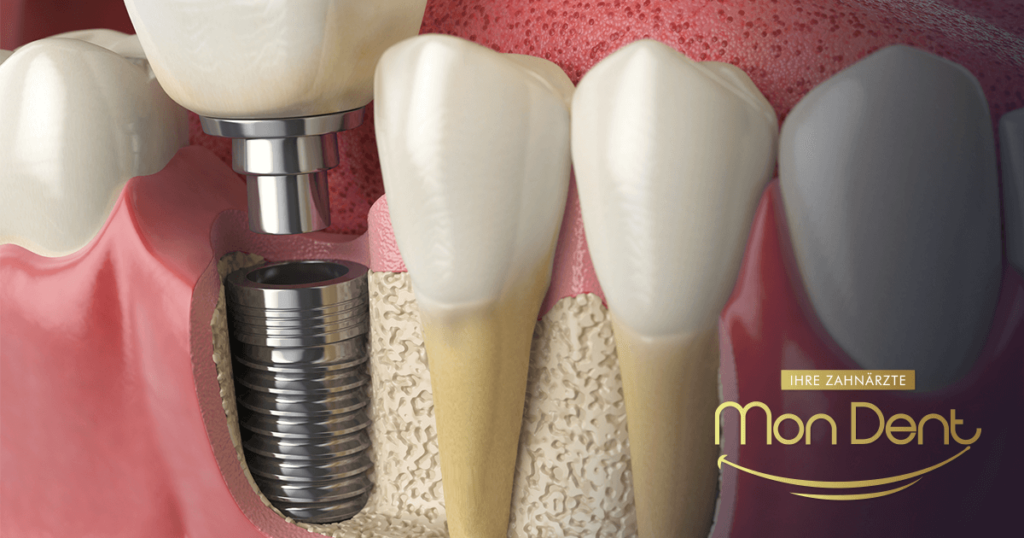
Innovative solutions without standard augmentation
For patients in whom standard bone augmentation is difficult or impossible, modern implantology offers innovative solutions which enable implant placement even in cases of severe bone deficiency. At MonDent, we apply advanced techniques that ensure implant stability and a functional, aesthetic smile, without additional complications.
Zygomatic implants
Zygomatic implants are special implants 30–52 mm long which are implanted in the cheekbones (zygomatic), instead of in the tip of the upper jaw. The cheekbones are stronger and provide stable support, which allows the placement of implants even in patients with extreme bone deficiency. This method represents an advanced solution when standard augmentations are not sufficient to compensate for the bone defect.
Zygomatic implants are used in the posterior parts of the upper jaw where there is significant bone loss. The procedure requires high expertise and precise planning, but provides reliable and long-lasting support for fixed prosthetic restorations.
All-on-4 i All-on-6 koncept
In patients with a completely edentulous jaw, concept All-on-4 (or All-on-6) uses 4 (or 6) implants arranged in the front of the jaw, where there is usually enough bone. This arrangement allows for a stable fixed prosthesis for the entire jaw, even if the back of the jaw does not have enough bone for standard implant placement.
This method allows fast prosthetic work, reduces the need for additional augmentations, and often allows for the placement of temporary teeth on the same day. Patients thus achieve a functional and aesthetic smile quickly and safely, with a minimal number of procedures.
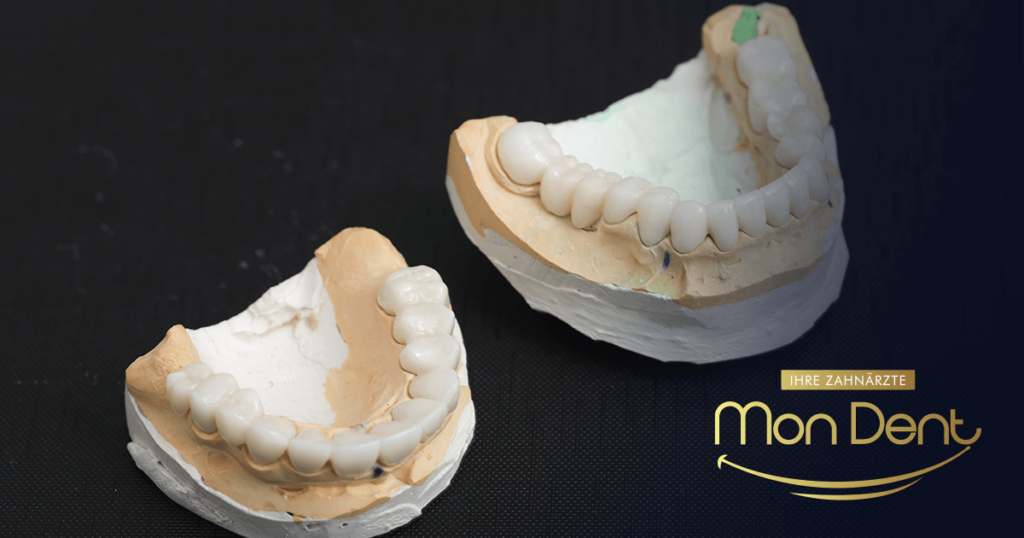
Implant installation process
Implant placement at MonDent is a carefully planned and safe process that ensures long-lasting results and maximum patient comfort. Each step is tailored to individual needs, especially for patients with bone deficiency.
Consultation and planning
The process begins with a detailed review and preparation CBCT 3D scan, which provides precise insight into the condition of the bones and teeth. Based on this data, the dentist, together with the patient, plans optimal number, position and type of implants, taking into account any preparatory measures, such as extraction of remaining roots or gum therapy. This individual approach allows for a safe and predictable procedure.
Surgical implantation
The implant itself takes place in local anesthesia, with the possibility of mild sedation for maximum patient comfort. The implant body, made of titanium, is carefully placed in the jawbone at a pre-planned location. The procedure is usually short and painless, takes about 20–30 minutes per implant. If necessary, a temporary restoration or protective cap is immediately placed to protect the implant during the healing process.
Healing (osseointegration)
After installation, the phase of fusion of the implant with the bone follows, known as osseointegration. In the lower jaw, this process usually takes 2–4 months, while in the upper jaw it takes 4–6 months. Once the implant has fully solidified and integrated with the bone, placement is planned. definitive ceramic crownsThroughout the entire period, MonDent patients have regular check-ups, which monitors the proper healing and functionality of the implants.
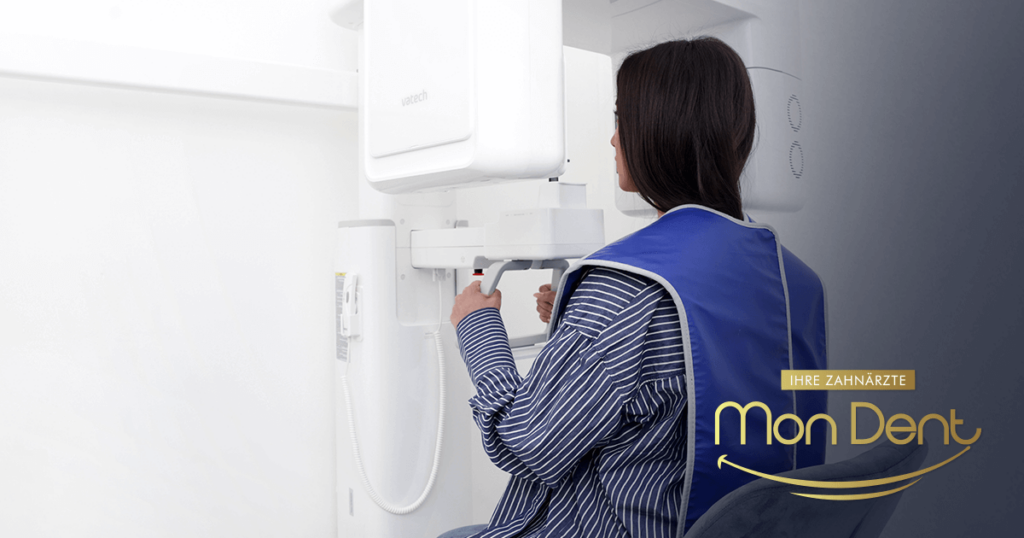
Why choose MonDent dental office?
Choosing the right dental office is crucial for the successful placement of dental implants. MonDent combines cutting-edge technology, a professional team, and a personalized approach to provide patients with a safe, comfortable, and long-lasting solution for tooth replacement.
State-of-the-art equipment
MonDent office has the latest 3D X-ray, which enables extremely precise diagnostics of bone and tooth conditions with minimal radiation dose.
- Experienced and professional team
Our team consists of implantology and oral surgery specialists with extensive experience. Thanks to professional expertise and modern techniques, Implant placement is often performed quickly and painlessly, with maximum safety and minimal stress for the patient.
- Painless therapy
All procedures are performed in local anesthesia, with the possibility of mild sedation. The procedure usually takes about 20–30 minutes per implant, and the patient does not feel any pain during the entire procedure. We pay special attention to comfort and safety to make the experience as pleasant as possible.
- Individual approach and support
Every patient receives personalized therapy plan, adapted to his needs and bone condition. After implant placement, we provide ongoing support and regular check-ups, ensuring long-term implant stability and optimal functional and aesthetic results.
MonDent is a place where modern technology and expertise go hand in hand, and we treat every smile as a unique and important project.
Conclusion
Placing implants in patients with bone deficiency requires expertise, precise diagnostics, and an individual approach. MonDent combines cutting-edge technology, an experienced team, and innovative methods to make each procedure safe, painless, and long-lasting.
Contact us and find out how we can restore your natural smile with maximum safety and quality.

